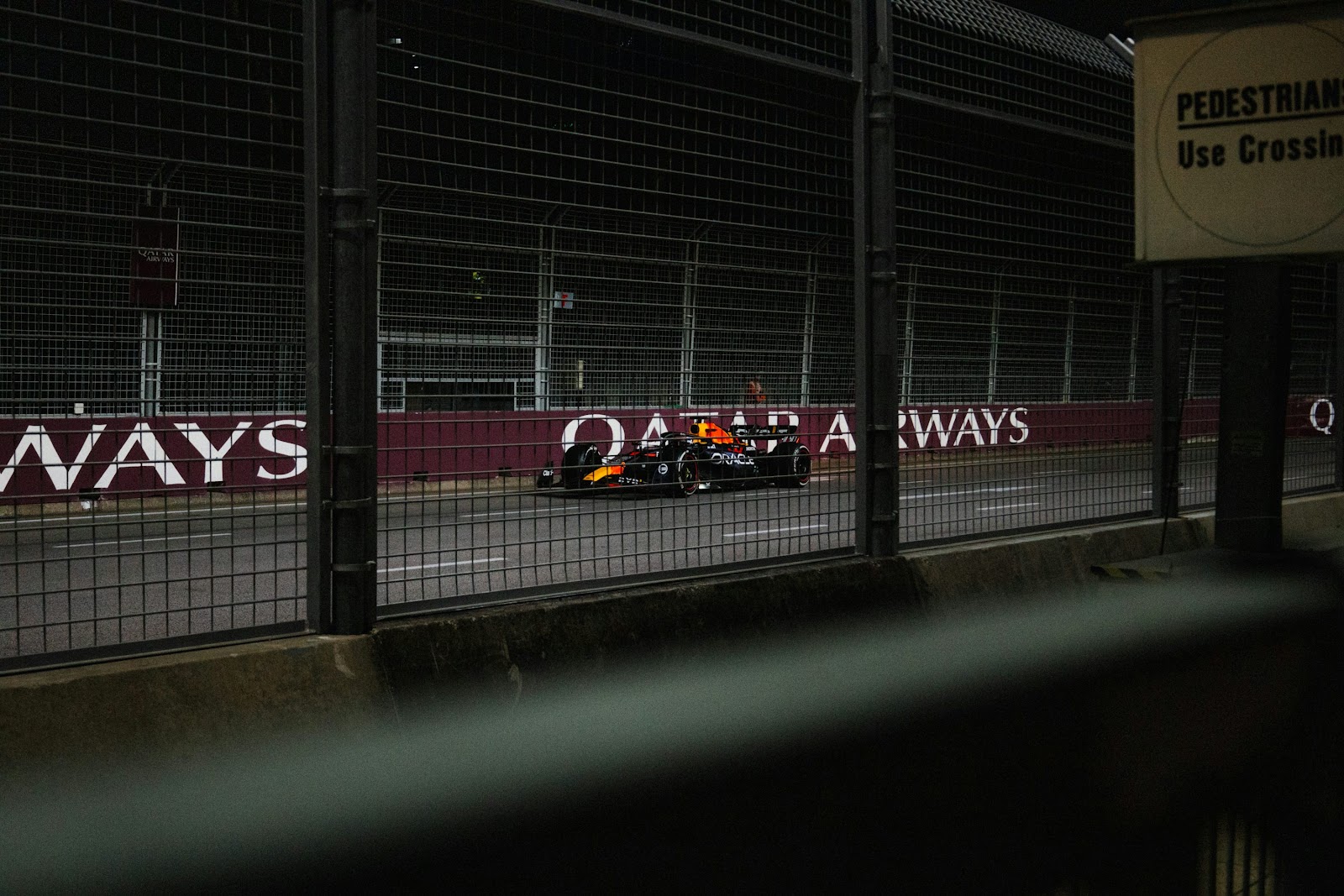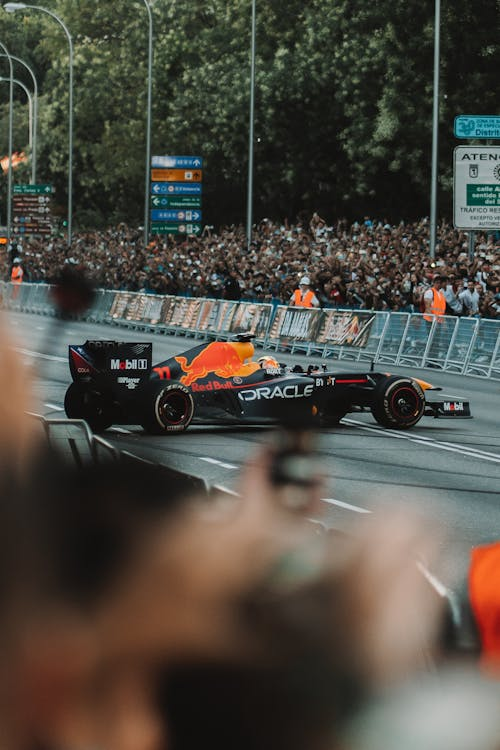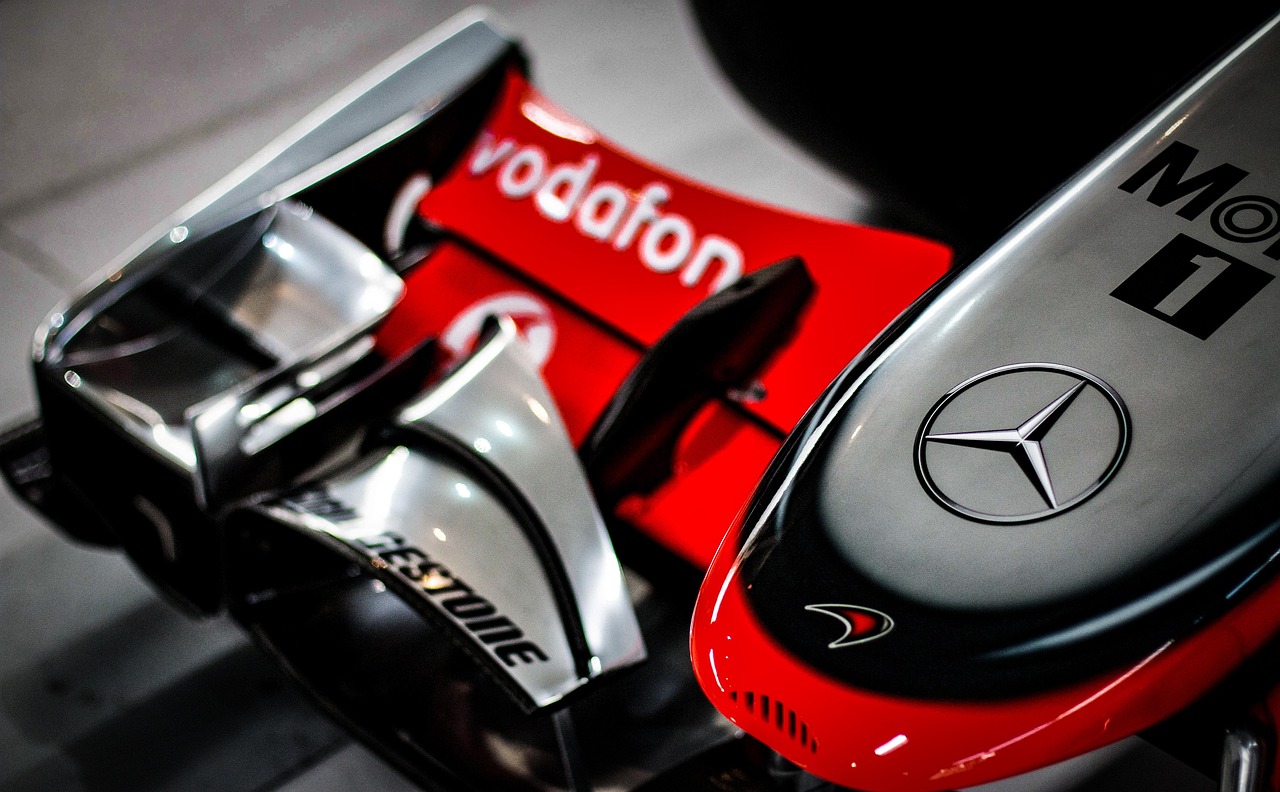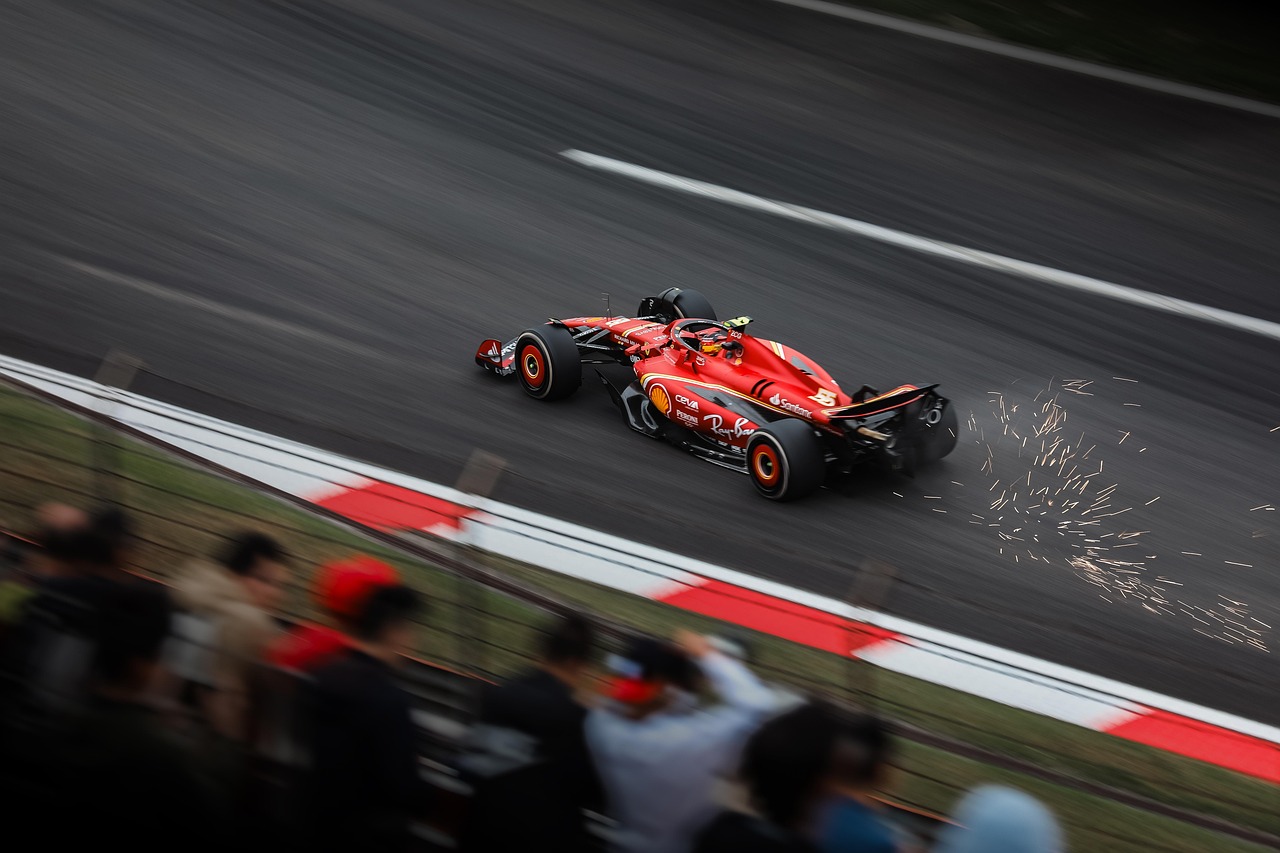Are F1 Cars Street Legal? Unveiling the Truth Behind Formula 1 Road Legality

Formula 1 represents the pinnacle of automotive engineering and racing performance. F1 cars are capable of reaching extraordinary speeds and delivering unmatched grip on smooth race tracks.
However, when it comes to the question of whether you can legally drive an F1 car on public roads, the answer is definitively no.
An original F1 car cannot be driven legally on any street or regular road. Exploring this subject in more detail requires examining the complex intersection of automotive design, safety requirements, and traffic regulations.
Let's get started.
Why Can't You Drive an Original F1 Car on Public Roads?
The engineering marvels that make Formula 1 cars dominant on the Grand Prix circuit are precisely what render them unsuitable and illegal for road use.
Every component of an F1 car is optimised for performance on controlled racing environments, from their extreme low ground clearance of approximately 1.9 inches to their specialised racing chassis.
Legal Requirements That F1 Cars Cannot Meet
The legality of any vehicle on public roads depends on meeting stringent safety and equipment requirements that Formula 1 cars simply cannot satisfy.
Every country has specific automotive regulations that mandate certain features for road-legal vehicles, and F1 cars fail to meet virtually all of these standards.
First and foremost, F1 cars lack essential safety equipment required for street use. They have no headlights, tail lights, or turn signals. These basic components are fundamental requirements for any road-legal vehicle.
The absence of these lighting systems alone would immediately disqualify an F1 car from legal road use in any jurisdiction.

Moreover, F1 cars are not equipped with mirrors, horns, or licence plate mounting points. These seemingly simple omissions represent major legal barriers, as traffic regulations mandate these features for vehicle identification and safe operation amongst other road users.
The specialised tub design of Formula 1 cars makes retrofitting these components extremely challenging without compromising the car's structural integrity.
The brake system in an F1 car, whilst incredibly powerful and sophisticated, lacks the handbrake mechanism required by law in most countries. Additionally, the carbon fibre brake components are designed for racing temperatures and conditions, making them potentially dangerous and unreliable under normal road conditions.
Engineering Challenges for Road Use
Beyond legal requirements, the fundamental engineering of Formula 1 cars creates insurmountable obstacles for road use.
-
The ride height of an F1 car is critical to its aerodynamic
performance, typically set at just 2.9 inches at the front and even lower at the rear. This extreme low ground clearance means the car would suffer constant damage from road irregularities, speed bumps, and normal street conditions.
-
The suspension system in an F1 car is engineered specifically
for the smooth, predictable surface of race tracks. The inboard suspension design and ultra-stiff spring rates that provide exceptional performance on circuits would make the car virtually undrivable on roads with typical imperfections, potholes, or varying surface conditions.
-
F1 engines present another significant challenge for road use.
These high-performance powerplants require constant monitoring and maintenance, operate at extremely high temperatures, and need specialised fuel. The engine management systems are calibrated for racing conditions and would struggle with the varied demands of street driving, including idle periods, traffic situations, and the need for consistent low-speed operation. -
The airflow requirements of F1 cars are calculated for high
speeds on race tracks. At the low speeds typical of street driving, the aerodynamic systems would not function as designed, potentially creating handling issues and reducing the effectiveness of cooling systems.
Practical Impossibilities of Street Driving
Even if legal barriers could be overcome, the practical realities of driving an F1 car on public roads would be nearly impossible.
-
The driving position is extremely uncomfortable for extende
periods, with the driver lying in a reclined position optimised for racing. -
The gearbox in Formula 1 cars is designed for racing
applications and lacks the smooth, progressive engagement needed for stop-and-go traffic. The clutch systems are optimised for racing starts and would be extremely difficult to modulate for smooth street driving. -
Ground clearance remains perhaps the most significant practical
barrier. With clearance of less than two inches in many areas, an F1 car would be unable to navigate standard road features like driveways, parking lots, or slight road crown variations without suffering damage to critical components.
What Would It Take to Make an F1 Car Street-Legal?
Converting an F1 car to street-legal status would require extensive modifications that would fundamentally alter the vehicle's character and performance.
The first requirement would be installing a complete lighting system, including headlights, tail lights, turn signals, and hazard lights that meet automotive safety standards.
The body panels would need significant modification to accommodate mirrors, licence plate mounting, and potentially a horn system. These changes would affect the carefully engineered airflow patterns that are crucial to the car's aerodynamic performance.
A major alteration would involve the brake system, requiring the addition of a handbrake mechanism and modifications to ensure the braking system can operate effectively at the lower temperatures. The carbon fibre brake components might need replacement with more conventional materials better suited to road conditions.
Structural and Ride Height Adjustments
Perhaps the most challenging modification would involve addressing the ground clearance issue. Increasing the ride height to make the car capable of navigating regular road conditions would require extensive suspension modifications and would dramatically impact the car's aerodynamic performance.
The suspension system would need complete redesign to provide acceptable ride quality and durability for road use. The current inboard suspension design and ultra-stiff spring rates would need to be replaced with a system capable of handling road irregularities whilst maintaining some semblance of the car's performance character.
Modifying the tub structure to accommodate these changes whilst maintaining safety standards would be an enormous engineering challenge. The racing chassis designer specifications that make F1 cars so effective on track are incompatible with the requirements for road use.

Engine and Drivetrain Adaptations
The F1 engines would require significant recalibration or replacement to function effectively in street conditions. The current powerplants are designed for specific operating windows and would need modifications to provide smooth idle, acceptable emissions, and reliability in varied operating conditions.
The specialised gearbox systems would likely need replacement with units capable of smooth operation in traffic conditions. The current systems are optimised for racing applications and would be unsuitable for the varied demands of street driving.
Cooling systems would require redesign to function effectively at the lower speeds typical of road driving, where the carefully calculated airflow patterns of the original design would be inadequate.
Are There Any Road-Legal Versions of Formula 1 Cars?
Whilst original F1 cars cannot qualify for road use, there have been several attempts to create road-legal versions inspired by Formula 1 technology. These efforts have typically involved building entirely new vehicles that incorporate F1-derived technology whilst meeting road safety requirements.
One notable example comes from the engineering team led by Eric Broadley and Lola Engineers, who have worked on projects aimed at bringing racing technology to road cars. However, these projects typically result in vehicles that share technology with F1 cars rather than being actual converted racing machines.
Some manufacturers have created limited-production vehicles that incorporate Formula 1 technology and engineering principles whilst meeting road safety standards. These cars often feature F1-derived engines, suspension technology, and aerodynamic principles adapted for road use, but they are fundamentally different vehicles built from the ground up for street legality.
Modern Interpretations and Track-Day Specials
In recent years, several manufacturers have created vehicles that attempt to bring the F1 experience to legal road use. These cars typically feature extreme performance capabilities whilst incorporating the safety equipment and design modifications necessary for road registration.
Australia and other countries with more flexible vehicle registration processes have seen some creative interpretations of road-legal racing cars. However, even in these jurisdictions, vehicles must meet fundamental safety requirements that preclude the use of actual F1 cars.
The Reality of Street-Legal Racing Cars
True street-legal cars that approach F1 performance typically represent significant compromises compared to actual Formula 1 cars. These vehicles must incorporate safety features, comfort considerations, and durability requirements that are antithetical to pure racing design.
Even the most extreme road-legal supercars fall far short of F1 car performance capabilities, particularly in terms of cornering speeds, braking performance, and acceleration.
The safety requirements and practical considerations of road use create limitations that cannot be overcome whilst maintaining street legality.

Conclusion
The question of F1 cars street legal status reveals the fundamental incompatibility between purpose-built racing machines and the requirements of public road use.
Whilst the dream of being able to drive an F1 car on regular roads captures the imagination of racing enthusiasts, the reality is that these vehicles represent such specialised engineering that conversion to road-legal status would require changes so extensive as to fundamentally alter their character.
F1 cars, with their extreme performance capabilities and specialised design, simply cannot be adapted to meet road requirements without losing the very characteristics that make them remarkable.
For those seeking to experience something approaching F1 performance on public roads, the closest alternatives remain purpose-built supercars. These vehicles represent the practical limit of what current automotive engineering can achieve whilst maintaining street legality.
Frequently Asked Questions
Can you buy a decommissioned F1 car for personal use?
Yes, decommissioned F1 cars are occasionally sold to private collectors, but they can only be used on private property or dedicated race tracks. These vehicles typically sell for hundreds of thousands to millions of pounds and require specialised maintenance teams and facilities.
What happens if someone tries to register an F1 car for road use?
Registration would be immediately denied by any motor vehicle department due to the absence of required safety equipment. The vehicle would fail basic roadworthiness inspections before registration could even be considered.
Are there any countries where F1 cars might be considered road-legal?
No developed country with established automotive regulations would permit an unmodified F1 car on public roads. Even countries with more relaxed vehicle import and modification rules maintain basic safety requirements that F1 cars cannot meet.
How much would it cost to convert an F1 car to street-legal status?
The conversion would likely cost more than purchasing the original F1 car, potentially reaching into the millions of pounds. The extensive modifications required would essentially result in building a new vehicle using some F1 components.
What is the closest road-legal car to an actual F1 car?
Track-focused supercars like the McLaren Senna, Ferrari FXX-K Evo (in road-legal trim), or Aston Martin Valkyrie represent the closest approximation to F1 performance whilst maintaining road legality, though they still fall significantly short of actual F1 capabilities.
Can F1 technology be used in road cars?
Yes, many technologies developed for F1 eventually make their way into road cars, including advanced materials, engine technologies, and electronic systems. However, these technologies must be significantly adapted and detuned for road use applications.
